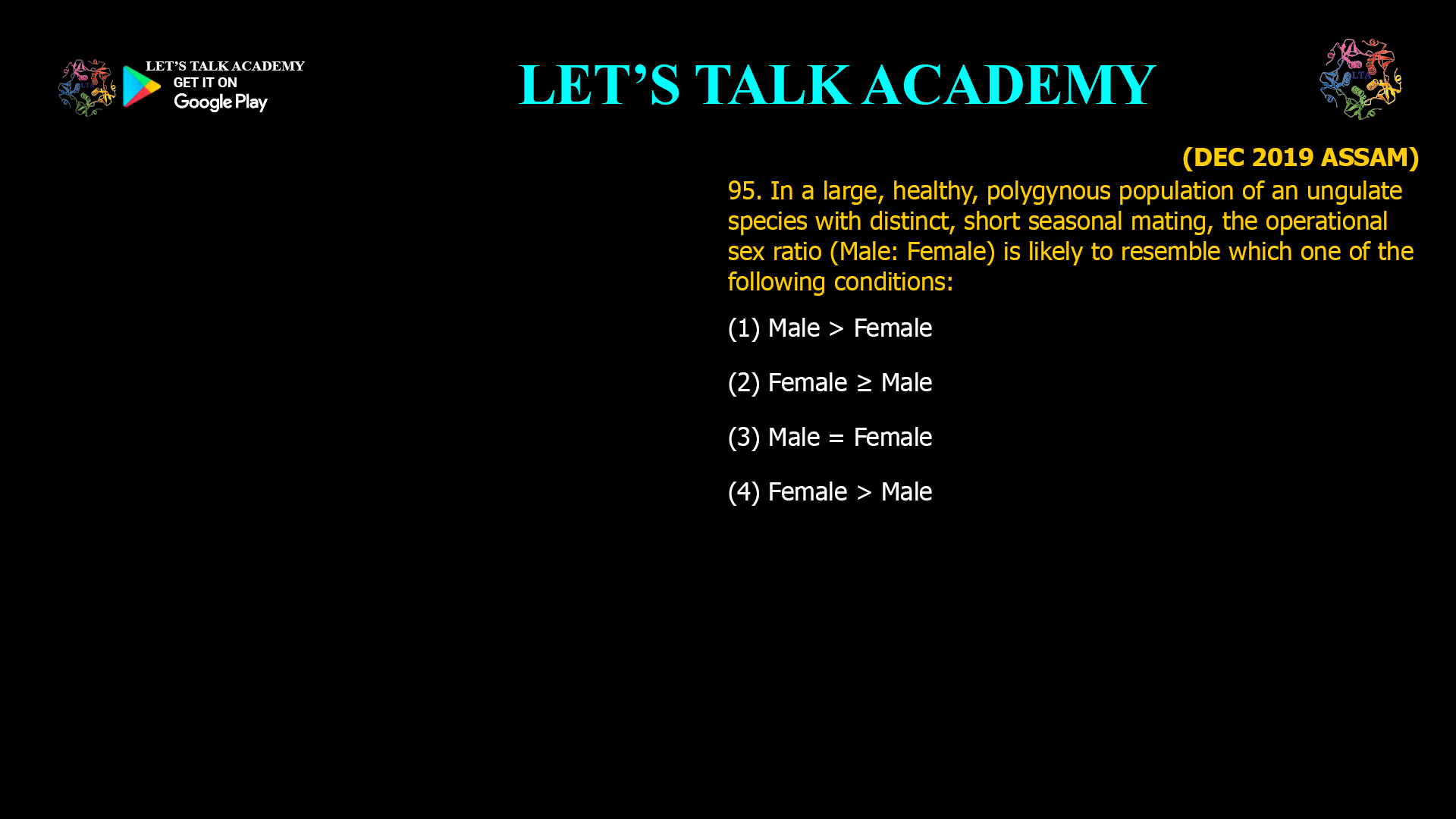- In a large, healthy, polygynous population of an ungulate species with distinct, short seasonal mating, the operational sex ratio (Male: Female) is likely to resemble which one of the following conditions:
(1) Male > Female (2) Female ≥ Male
(3) Male = Female (4) Female > MaleWhat is the Operational Sex Ratio?
The operational sex ratio is not simply the count of males and females in a population, but rather the ratio of males to females who are ready and able to mate at the same time. In polygynous species—where one male mates with multiple females—this ratio can fluctuate dramatically during the breeding season.
Why Is the OSR Female-Biased in Polygynous Ungulates?
During a short, synchronized mating season, several factors lead to a female-biased OSR:
-
Breeding Synchrony: In many ungulate species, females come into estrus (fertile period) at roughly the same time, creating a brief window when many females are ready to mate.
-
Male Competition and Exclusion: Only a subset of dominant males are successful in mating, while many subordinate or younger males are excluded from breeding opportunities, further reducing the pool of actively mating males.
-
Physical Exhaustion and Injury: Intense male-male competition during the rut can lead to exhaustion or injury, sidelining some males from the mating pool.
-
Female Availability: Because so many females are in estrus at once, the number of receptive females often exceeds the number of available, competitive males.
Evidence from Research
Long-term studies in polygynous ungulates like reindeer and other large mammals consistently show that, during the peak of the breeding season, the operational sex ratio is female ≥ male, and often female > male. This means there are more receptive females than competing, mating-ready males at any given time.
Implications for Mating Behavior
-
Intense Male Competition: With more females available than males, dominant males can monopolize several mates, while many males may not breed at all.
-
Sexual Selection: This female-biased OSR intensifies sexual selection on males, driving the evolution of large body size, weaponry, and elaborate displays.
Conclusion
In a large, healthy, polygynous population of an ungulate species with a short, seasonal mating period, the operational sex ratio (male:female) is most likely to be:
Female ≥ Male (Option 2)
-




1 Comment
Kajal
October 13, 2025Females can be equal to or more than Man